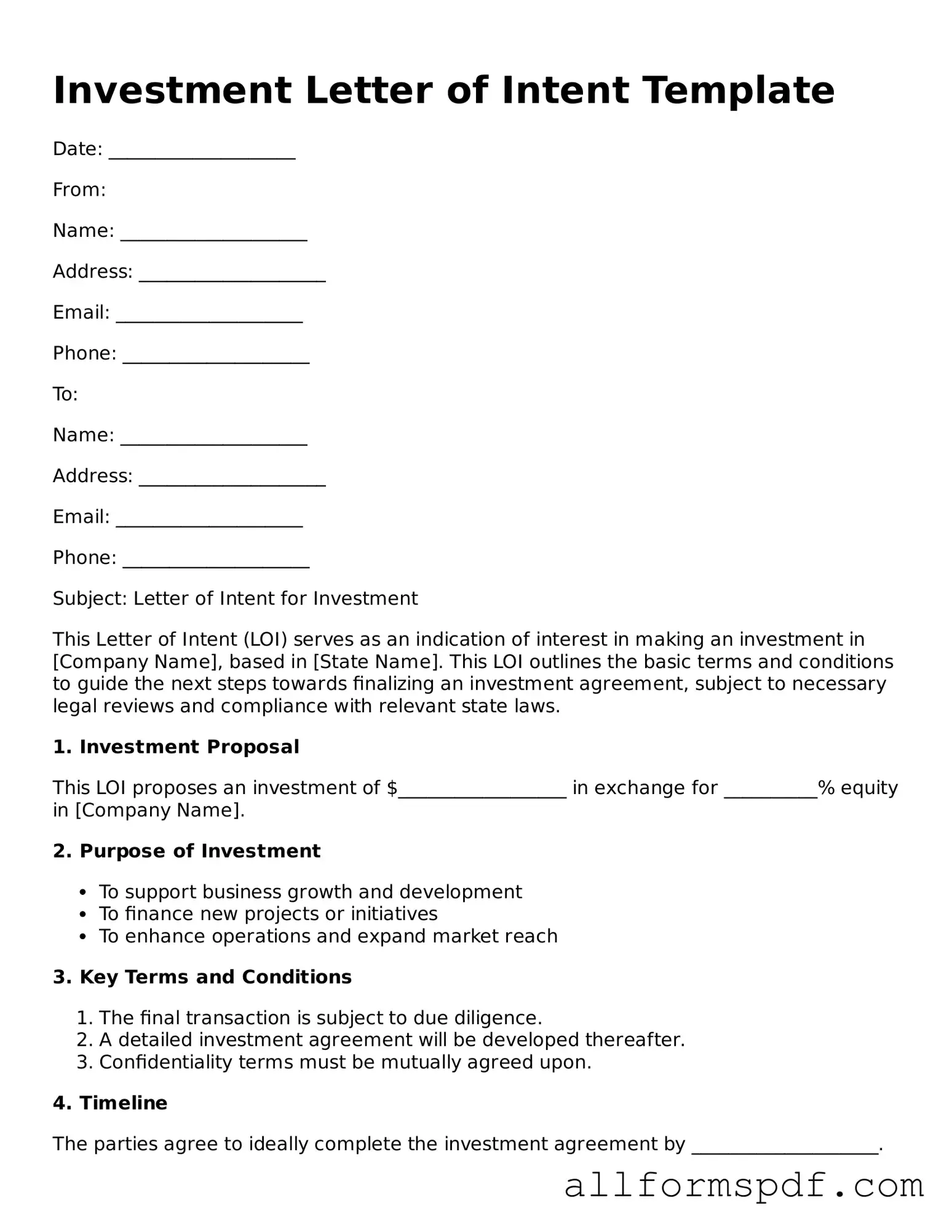Filling out an Investment Letter of Intent form can be a straightforward process, but many individuals make common mistakes that can lead to delays or complications. One of the most frequent errors is providing incomplete information. When sections are left blank, it creates confusion and may require additional follow-up. Always double-check that every required field is filled out completely.
Another mistake often seen is failing to read the instructions carefully. Each form has specific guidelines that must be followed. Ignoring these can result in incorrect submissions. Take the time to review the instructions before starting the form to ensure compliance with all requirements.
People sometimes misinterpret the purpose of the form. An Investment Letter of Intent is not a binding contract but rather an expression of interest. Misunderstanding this can lead to unrealistic expectations. It's important to grasp the intent behind the document to avoid future misunderstandings.
Additionally, some individuals overlook the importance of accuracy in their financial details. Providing incorrect figures can lead to significant issues later on. It's advisable to verify all financial information before submitting the form to ensure that it reflects true and accurate data.
Another common pitfall is neglecting to sign and date the form. A signature is often required to validate the document. Without it, the form may be considered incomplete, causing unnecessary delays. Always ensure that you have signed and dated the form before submission.
People also tend to forget about the importance of contact information. Providing outdated or incorrect contact details can hinder communication. Make sure to include your current phone number and email address, ensuring that you can be reached easily for any follow-up.
Some individuals rush through the process, leading to typographical errors. These small mistakes can change the meaning of the information provided. Take your time to review your entries carefully to catch any errors before submitting the form.
Another frequent error is failing to keep a copy of the submitted form. It's crucial to have a record for your own reference. Keeping a copy can help you track your submission and provide necessary information in case of any discrepancies.
Lastly, many people do not follow up after submitting the form. Checking in can help confirm that your application is being processed and that all information is correct. A simple follow-up can provide peace of mind and ensure that everything is on track.
